#russian reconnaissance aircraft
Explore tagged Tumblr posts
Link
Dodáváme příběhy. Dáme vám také návody, tipy a triky, jak si vytvořit svůj vlastní.Tento kanál je věnován náhodným věcem, které se objevují na našich stolech.
#japan airspace violation#russian reconnaissance aircraft#japanese warplanes#regional tensions#rebun island#chinese and russian warships#joint military exercise#flares warning#scrambled f-15 and f-35 jets#diplomatic protest#japan's defense minister#extremely regrettable incident#warning operations#military cooperation china-russia#japan-russia conflict#air violation#northern japanese airspace#russian il-38 plane#chinese-russian fleet#japan's security concerns.
0 notes
Text

Yesterday🇳🇴 F-35s scrambled in response to a 🇷🇺 Coot-A in international airspace off the coast of Finnmark.
Scrambles are triggered when aircraft fly an invalid or incorrect flight plan, fail to or lose communication with Air Traffic Control or fail to use the transponder
📷by🇳🇴
@NATO_AIRCOM via X
#f 35 lightning ii#lockheed martin#stealth#fighter#norwegian#norway 🇳🇴#aircraft#aviation#coot-2#reconnaissance#russian air force#cold war aircraft
21 notes
·
View notes
Photo

Russian Navy Tupolev Tu-142 maritime reconnaissance and anti-submarine warfare aircraft over Russia
#Tupolev#Tu-142#Maritime reconnaissance#Anti-submarine warfare#Aircraft#Military aircraft#Airplane#Russian aircraft
52 notes
·
View notes
Text
Ukraine Destroys Russia’s Brand-New $65 Million Warship Sergei Kotov
Ukraine has destroyed the newest patrol ship of Russia’s Black Sea Fleet, the $65 million Sergei Kotov, and left pro-Kremlin war reporters sulking.
“As a result of a strike by Magura V5 maritime drones, the Russian Project 22160 ship Sergei Kotov received damage to the stern, starboard and left sides,” Ukrainian military intelligence said in a statement.
“The fewer such ships, the fewer anti-aircraft missile systems will be deployed on them, meaning more opportunities for Ukrainian security and defense forces,” spokesman Andriy Yusov told local media, adding that more than 10 ambulances were spotted rushing to help the evacuated crew members. At least seven crew members were killed, Ukrainian authorities said.
Audio of what Ukraine described as an intercepted radio communication also appeared to capture a Russian commander reporting on the “tragic event” and destruction of the ship, lamenting that a helicopter had also been obliterated in the nighttime attack near the Kerch Strait.
The 308-foot, 1,700-ton ship entered the Black Sea Fleet in July 2022.
Russia’s Defense Ministry has yet to comment on the incident, though pro-Kremlin military bloggers begrudgingly admitted that Ukraine had pulled off the attack.
“If it continues like this, the Black Sea Fleet will have only catamarans and rubber banana boats for vacationers. It’s fucked,” wrote one popular pro-war Telegram channel.
The Sergei Kotov had been targeted in three previous attacks by Ukrainian forces before finally being taken out this time around. Noting that Russia had plenty of defenses in place to protect the ship, pro-war propagandist Alexander Kots said that “unfortunately, the enemy is also evolving.”
“The crew fought heroically until the end. … But this time it is a story without a happy ending,” he wrote on social media.
“The ship ‘Sergei Kotov’ sunk,” wrote former Vladimir Putin adviser Sergei Markov, calling it part of a “new type of war” in which “what matters most are the multitude of drones, space reconnaissance, and electronic warfare.”
“This is where we need to overtake the West,” he said.
By Allison Quinn.
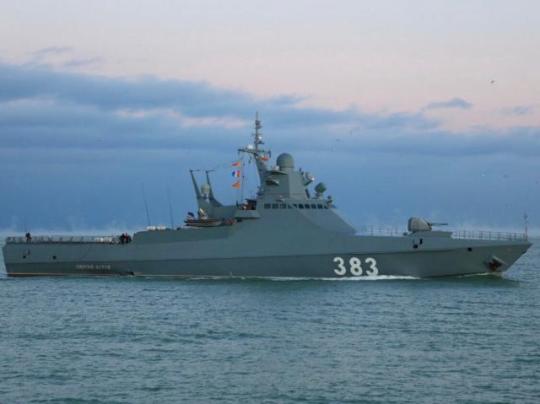
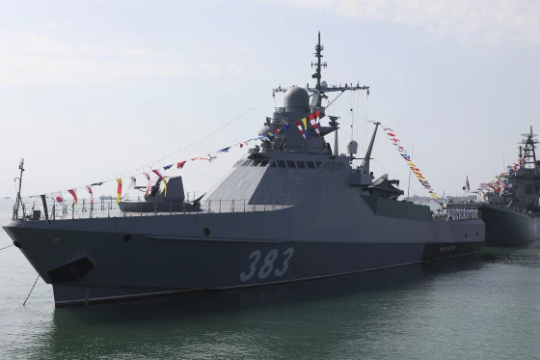
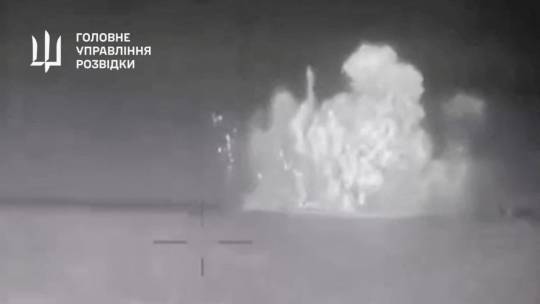
#Sergei Kotov#Ukraine Destroys Russia’s Brand-New $65 Million Warship Sergi Kotov#ukraine#russia#russian war on ukraine#drone#MAGURA V5 maritime drones#ship#russian ship sunk#russian Black Sea fleet#war#world at war#weapons#battle#fighting#combat
67 notes
·
View notes
Text

It's KAB time.
I will tell you about one more thing that we encounter here every day. These are KABs (guided aerial bomb), or FABs. Aviation bombs of great power. This is one of the most terrible things that I encountered in the war. Very destructive and the occupiers use these bombs en masse.
You can suddenly come under fire and not even have time to get scared. Hitting a bullet or bursting a mine is a moment but you hear the bomb before it explodes. You hear it approaching with a characteristic sound. And you understand that if it flies at you, there are few chances.
Roughly speaking, there are two types of gliding bombs. Those that were created as controlled (UPAB-500B and 1500B) from the very beginning and modified FABs (high-explosive aviation bombs of general purpose), to which correction and flight control modules are attached These are FAB-250, FAB-500, FAB-1500.
They are not done very well, but the russians have a lot of them, and they can quickly equip the required number of bombs. Enemy planes fly up 40-50 km to the battle line, launch these bombs. They fly to their target and hit it. If they hit, of course.
Something about the quality and design of processing. We often find remnants of control modules as in the photo.
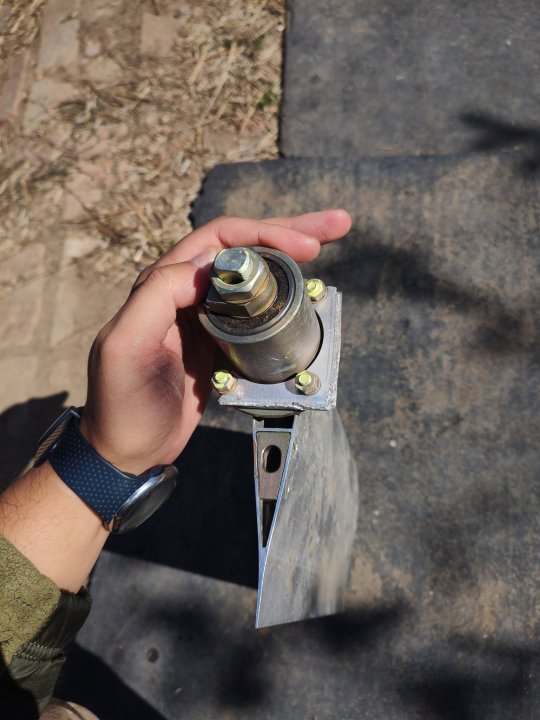
It is obvious that the design provides for quick manufacturing, and the charter is minus the quality. Sometimes bombs fall, but do not explode.
This "specimen" actually lay under our feet for some time. Over time, it was taken away from here and, I think, blown up somewhere away from where it could do harm. They aimed at the road, or at something that was travelling by it.
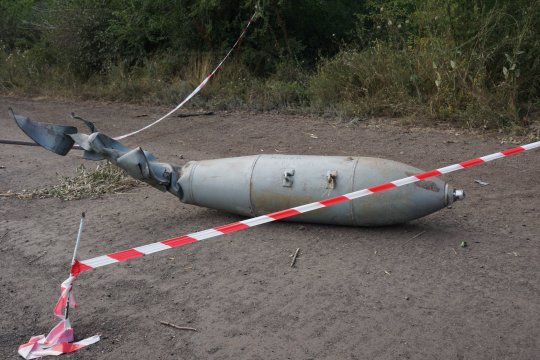
I can assume that the russians, as often happens, saw ideas about such "recycling" of old bombs in the West. They liked JDAM's technical solution. Their propaganda likes to mention it in the context of the aerial bombardment campaign of Yugoslavia.
One of the russian weapons experts referred to this system (which includes a GPS-based guidance system and wings). He called it the "bra bomb." The russians have always had problems with naming.
The very range of dropping guided air bombs depends on the flight parameters of the carrier - speed and altitude. Accordingly, the higher and faster the aircraft drops, the farther such bombs will fly. KABs are considered a difficult target to shoot down since the bomb carrier does not enter the area of air defence.
In addition, we can not afford to keep stationary air defence systems near the front because there are not enough of them to cover objects in the rear. Moreover, as soon as the air defence systems are brought closer to the front, the resistance to their destruction also increases. In a word, it is impossible to reliably protect yourself from KABs here at the front. There is no suitable resource. And even if there was, it would not always be possible anyway.
The russians use these bombs every day and in large numbers. The targets are different. The positions of our units are in the immediate vicinity of the contact line. Logistics routes. Places of possible location of equipment, headquarters, warehouses, etc. They do not hesitate to shoot on the roads and in their own trenches, which were occupied by the Armed Forces. There is a defined list of roads and logistics routes. From time to time, bombs fall either next to these roads or even on them. However, in this case, the effect is questionable.
Daily is that the russians conduct thorough aerial reconnaissance of various depths. Near the contact line, in our rear. These are the same commercial drones as ours, as well as their regular "wings" - Orlans, Zaly, Superkams. Based on the results of the intelligence, they are trying to launch airstrikes at the corresponding points. I don't know what the accuracy statistics of these strikes are, but from what I could assess with my own eyes, I would say that it is not high.
There are objects that the russians have been shooting at for several months in a row and can not hit. Fields, towns, and villages are strewn with debris from these bombs. The worst thing is that they often purposefully launch anti-aircraft missiles at residential buildings, trying to reach infrastructure facilities. Many settlements were destroyed or hopelessly damaged by these bombs. They simply turn walnuts and neighbouring villages into crushed stone and clay.
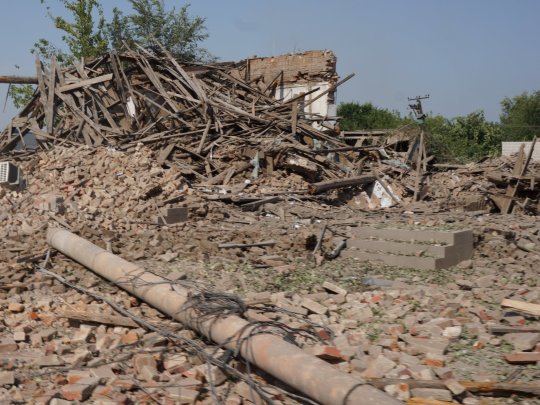
They use them both during the day and at night. The graphs look variable. In a certain period, concentrated and massive airstrikes took place at night. For example, during the day, they reconnoitred something, and with the onset of darkness, begin shelling the specified coordinates. During the day, the strikes were carried out as a result of more operational reconnaissance or a reaction to some events. For example, the occupiers could receive information that equipment had passed in a certain place. Then they raise the plane and launch a bomb there. Even if belatedly.
Another example. When another KA-52 government helicopter was shot down, they launched 4 bombs on the square, where they thought the MANPADS missile might have come from. With the corresponding accuracy that I have already spoken about. We have repeatedly seen bomb explosions during operation. This solves the problem of high losses of battleboards. Aircraft become unreachable for MANPADS. On the other hand, the bomb's flight time increases, and we have more time to hide if there is such an opportunity.
This story is primarily about how we move forward in a situation where the enemy has air superiority. Under constant airstrikes. When the targets are located in the steppe, like in the palm of your hand, the surrounding fields are mined, and the narrow corridors for movement are restricted and shot at. I can't imagine anyone considering launching a ground offensive without the necessary air assets. But the Armed Forces do it and have success.
81 notes
·
View notes
Text
Russian President Vladimir Putin’s order for nuclear weapon drills went public on May 6, the day after Orthodox Easter—a bitter irony since he styles himself a fervent guardian of Christian values, which do not include the simulation of nuclear annihilation the last time I checked. I wonder whether he signed the order before or after his much-publicized attendance of Easter service at Moscow’s Cathedral of Christ the Savior.
The exercises will simulate “theater,” or regional, nuclear attacks, in contrast to “strategic” nuclear exercises simulating war with the United States. These theater exercises will be centered in Russia’s southern military district, likely targeting not only Ukraine but also NATO members Romania, Bulgaria, and Turkey. The message coming from Moscow is that the exercises are in answer to loose talk from French President Emmanuel Macron and other NATO leaders about possibly sending alliance forces to fight in Ukraine.
The Kremlin appears to be reinforcing, in no uncertain terms, a red line against NATO boots on the ground in Ukraine. Fortunately, it is a red line that most NATO leaders share, including U.S. President Joe Biden. From the very outset of Putin’s invasion of Ukraine in February 2022, Biden made it clear that the United States and its allies would send military assistance to Ukraine but not engage in the fighting. His goal was and remains crystal clear: to avoid a direct fight between Russia and NATO in Europe that could escalate to World War III and nuclear conflict.
Putin also wants to avoid a direct fight between Russia and NATO. For him, that means avoiding strikes against NATO territory or reconnaissance aircraft patrolling the airspace over the Black Sea. NATO deliveries are fair game for attack once they arrive on Ukrainian soil, but not while they are still transiting NATO territory.
The United States and Russia thus agree on one thing in this terrible war: They do not want to risk a nuclear holocaust. Why, then, do the Russians keep claiming that the world is facing one?
Part of it is evidently the Kremlin’s effort to derive value from this very brinkmanship—a pattern of behavior rarely seen since the 1962 Cuban missile crisis, the last time the world came to the brink of a nuclear exchange. During the Cold War, the United States and Soviet Union fought proxy wars in many places, from Angola to Vietnam, but threats to use their nuclear forces rarely played a role. Neither side used such threats to achieve conventional battlefield goals, the way leading Russian officials have been doing throughout the war in Ukraine.
Instead, Washington and Moscow first built up their strategic arsenals—the long-range nuclear weapons by which they threaten each other directly—sustaining essential parity as they went. So long as neither side built significantly more than the other, and as long as both sustained a high level of readiness, the two superpowers had a nuclear deterrent that both considered stable.
This stability became so boring and reliable that people more or less forgot about nuclear annihilation. Once policymakers in Washington and Moscow began to control and limit their nuclear arsenals in the 1970s—starting with the first U.S.-Soviet détente and the Nuclear Nonproliferation Treaty—the rest of the world was glad. No one wanted to think about what would happen if the nuclear superpowers “pressed the button.” And they did not have to: The superpowers were heading in a different direction, reducing their reliance on nuclear weapons.
The war in Ukraine has thrown this complacency into turmoil, because Putin and his minions have insisted on rattling the nuclear saber throughout the invasion. Now the rest of the world has to think again about nuclear weapons and what Russia might do with them.
This bizarre game of nuclear look-at-me is linked to the Kremlin’s equally bizarre complaint that its act of invading Ukraine has created an existential threat to Russia. In this telling, NATO support to Ukraine is tied up with strategic defeat of Russia. As commentators in Moscow claim, Russia only wanted the best for Ukraine—its liberation from a “Nazi” regime and a fake idea of statehood. However, once NATO began to aid Kyiv, the bloc’s goal was not helping Ukraine, but destroying and dismembering Russia.
Some leading officials in NATO member states have indeed voiced Russia’s strategic defeat as an objective for what they are trying to achieve in assisting Ukraine. But again, Biden has been crystal clear that the bloc has a limited objective that does not threaten Russia itself. In May 2022, he said: “We do not seek a war between NATO and Russia. As much as I disagree with Mr. Putin, and find his actions an outrage, the United States will not try to bring about his ouster in Moscow. So long as the United States or our allies are not attacked, we will not be directly engaged in this conflict, either by sending American troops to fight in Ukraine or by attacking Russian forces.”
But Putin and his chief ministers have not been mollified. They continue to go on and on about how the United States and NATO are seeking the strategic defeat of Russia and its demise as a nation. Their motivation is obvious: If its people believe that the country is facing total destruction, they will stay in the fight for the sake of survival.
So there is a lesson here for leaders not only in the United States but also in Europe and Asia: The fabric of nuclear deterrence is changing, its mind game adjusting to a new era of nuclear brinkmanship. So far, Putin and those around him have been the most active practitioners, but North Korea’s Kim Jong Un, whose nuclear capacity now extends beyond his regional neighbors, has been not far behind. Beijing, although it has sustained a nuclear good-guy image with a policy of no first use, could be tempted to follow Putin’s example as its nuclear force structure becomes more modernized and its ambitions extend throughout Asia.
With so much loose nuclear talk in the air, the United States and its allies must think hard about how to sustain stable and strong deterrence. In other words, they are going to have to focus on how to talk responsibly to the global public about nuclear weapons. The most important audience in deterrence, of course, are the potential nuclear aggressors.
The first rule should be to maintain discipline about using terms such as “strategic defeat,” so as not to pander to claims that it is Washington and its allies that are posing an existential threat. If the United States does not seek the destruction of the aggressors’ regimes and the dismemberment of their countries, it should say so. If Washington is not clear about the objectives in a conflict, then it should say nothing at all.
The second rule should be to sustain the effectiveness of the U.S. nuclear deterrent and the reliability of its command and control systems. That means consistent, solid support for the ongoing modernization of the nuclear triad. It means continuing nuclear training and exercises in a transparent manner and testing nuclear delivery systems—missiles and bombers. All of these actions should not be articulated in a threatening manner—the United States should not be the one rattling the nuclear saber—but convey quiet confidence in the country’s nuclear deterrence forces.
Third, Washington should be pursuing with assurance the mutual predictability that comes from controlling and limiting nuclear weapons at the negotiating table. Of course, Russia, China, and North Korea show little interest in coming to that table today, but the United States should not be the side that is quitting it. The global public wants to see continued progress on nuclear disarmament and nonproliferation, not a descent into a new nuclear arms race. And importantly, the table of nuclear talks is a good place to deliver deterrence messages. As difficult as it may be, the United States and its allies must continue to lead in this arena.
Finally and most importantly, the United States and its allies must sustain steady progress in military assistance to Ukraine. The most serious implication of the delayed funding vote in the U.S. Congress was that the United States could be halted in its tracks by a bully brandishing nuclear weapons. U.S. leaders need to convey quiet confidence in the country’s nuclear deterrent and keep their promises to Ukraine. Together, these two elements make up the critical message that must go to others who might try nuclear threats to get their way.
In each of these steps, Washington has great potential to bolster its nuclear deterrent. The United States’ naturally open system facilitates communicating deterrence messages when a president speaks to the nation or military and political leaders testify before the U.S. Congress. The national budget process permits the country to convey openly and clearly the process of its nuclear modernization. And working together with allies, the United States can drive nuclear statecraft forward in ways that preserve nuclear predictability and, at the same time, strengthen deterrence. The fabric of nuclear deterrence may be changing, but determining its future must not be left to the aggressors.
13 notes
·
View notes
Text
The Ukraine missile crisis: Putin’s shadow war against the west finally breaks cover
The unprecedented firing by Ukrainian forces of British-made long-range Storm Shadow missiles at military targets inside Russia last week means the UK, along with the US, is now viewed by Moscow as a legitimate target for punitive, possibly violent retaliation.
In a significant escalation in response to the missile launches, Vladimir Putin confirmed that, for the first time in the war, Russia had fired an intermediate-range ballistic missile, targeting the Ukrainian city of Dnipro. Putin also said Russia now believed it had the “right” to attack “military facilities” in countries that supply Kyiv with long-range weapons. Though he did not say so specifically, he clearly meant attacks on the UK and US.
Yet in truth, Britain and its allies have been under constant Russian attack since the war began. Using sabotage, arson, deniable cyber-attacks and aggressive and passive forms of covert “hybrid” and “cognitive” warfare, Putin has tried to impose a high cost for western support of Ukraine.
This largely silent struggle does not yet amount to a conventional military conflict between Nato and its former Soviet adversary. But in an echo of Cuba in 1962, the “Ukraine missile crisis” – fought on land, air and in the dark-web alleyways and byways of a digitised world – points ominously in that direction.
Concern that Russia’s illegal, full-scale 2022 invasion of Ukraine would trigger a wider war has preoccupied western politicians and military planners from the start. The US, UK and EU armed and bankrolled Kyiv and placed unprecedented, punitive sanctions on Moscow.
But US president Joe Biden remained cautious. His primary aim was to contain the conflict. So the convenient fiction developed that the west was not fighting Russia but, rather, helping a sovereign Ukraine defend itself. That illusion was never shared by Moscow.
Biden can do nothing now to halt the war. He had his chance in 2021-2022 and blew it
From the outset, Putin portrayed the war as an existential battle against a hostile, expansionist Nato. Russia was already big on subversion. But as the conflict unfolded, it initiated and now appears to be accelerating a wide array of covert operations targeting western countries.
Biden’s decision on long-range missiles, and Moscow’s furious vow to hit back, has placed this secret campaign under a public spotlight. Russian retaliation may reach new heights. But in truth, Putin’s shadow war was already well under way.
Last week’s severing of Baltic Sea fibre-optic cables linking Finland to Germany and Sweden to Lithuania – all Nato members – is widely regarded as the latest manifestation of Russian hybrid warfare, and a sign of more to come.
Some suggest the damage was accidental. “Nobody believes that,” snarled Boris Pistorius, Germany’s defence minister.
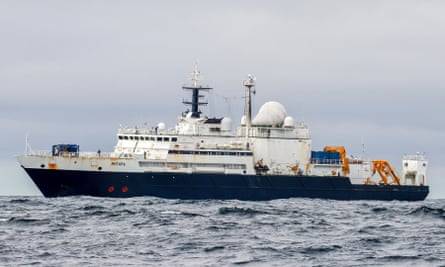
The Yantar, a Russian reconnaissance ship, seen in UK waters this month. Photograph: Dan Rosenbaum/MOD
Earlier this month, a Russian ship, the Yantar – supposedly an “oceanographic research vessel” – had to be militarily escorted out of the Irish Sea. Its unexplained presence there, and previously off North Sea coasts and in the English Channel, where it was accompanied by the Russian navy, has been linked to the proximity of unprotected seabed inter-connector cables carrying global internet traffic between Ireland, the UK, Europe and North America.
Suspected Russian hybrid warfare actions on land, in Europe and the UK, are multiplying in scope and seriousness. They range from large-scale cyber-attacks, as in Estonia, to the concealing of incendiary devices in parcels aboard aircraft in Germany, Poland and the UK.
Western spy agencies point the finger at the GRU, Russia’s military intelligence agency (which was responsible for the 2018 Salisbury poisonings). Naturally, all this is denied by the Kremlin.
It gets even more alarming. In the summer, US and German intelligence agencies reportedly foiled a plot to assassinate top European defence industry executives, in an apparent effort to obstruct arms supplies to Kyiv.
Putin’s agents have been blamed for a wide variety of crimes, from assassinations of regime critics on European soil, such as the 2019 murder in Berlin of a Chechen dissident, to arson – for instance, at a warehouse in east London this year – to the intimidation of journalists and civil rights groups, and the frequent harassment and beating of exiled opponents.
Last month, MI5 head Ken McCallum said the GRU has ‘a sustained mission to generate mayhem on British and European streets’
National infrastructure, elections, institutions and transport systems are all potential targets of hostile online malefactors, information warfare and fake news, as Britain’s NHS discovered in 2017 and the US in 2016 and 2020 during two presidential elections.
Some operations are random; others are carried out for profit by criminal gangs. But many appear to be Russian state-organised. Such provocations are intended to sow chaos, spread fear and division, exacerbate social tensions among Ukraine’s allies and disrupt military supplies.
In January, for example, a group called the Cyber Army of Russia Reborn caused significant damage to water utilities in Texas. Biden administration officials warned at the time that disabling cyber-attacks posed a threat to water supplies throughout the US. “These attacks have the potential to disrupt the critical lifeline of clean and safe drinking water,” state governors were told.
Alerts about Russia’s escalating activities have come thick and fast in recent months. Kaja Kallas, the former Estonian prime minister and newly nominated EU foreign policy chief, spoke earlier this year about what she called Putin’s “shadow war” waged on Europe. “How far do we let them go on our soil?” Kallas asked.
In May, Donald Tusk, Poland’s prime minister, accused Moscow of repeated acts of sabotage. In October, Ken McCallum, head of MI5, said the GRU was engaged in “a sustained mission to generate mayhem on British and European streets”.
Nato’s new secretary-general, Mark Rutte, a former Dutch prime minister, added his voice this month. Moscow, he said, was conducting “an intensifying campaign of hybrid attacks across our allied territories, interfering directly in our democracies, sabotaging industry and committing violence … the frontline in this war is no longer solely in Ukraine.”

People hold portraits of Zelimkhan Khangoshvili, a Chechen dissident, murdered in Berlin in 2019. Photograph: Zurab Kurtsikidze/EPA
When the foreign ministers of Poland, Germany and France – the so-called Weimar Triangle – plus the UK, Italy and Spain met in Warsaw last week, they tried to provide answers. “Moscow’s escalating hybrid activities against Nato and EU countries are unprecedented in their variety and scale, creating significant security risks,” they declared.
But their proposed solution – increased commitment to Europe’s shared security, higher defence spending, more joint capabilities, intelligence pooling, a stronger Nato, a “just and lasting peace” in Ukraine and a reinforced transatlantic alliance – was more familiar wishlist than convincing plan of action. Putin is unlikely to be deterred.
Far from it, in fact. Last week’s missiles-related escalation in verbal hostilities has highlighted the Russian leader’s flat refusal to rule out any type of retaliation, however extreme.
His mafioso-like menaces again included a threat to resort to nuclear weapons.
Putin’s very public loosening of Russia’s nuclear doctrine, which now hypothetically allows Moscow to nuke a non-nuclear-armed state such as Ukraine, was a tired propaganda ploy designed to intimidate the west. Putin is evil but he’s not wholly mad. Mutual assured destruction remains a powerful counter-argument to such recklessness.
Putin has other weapons in his box of dirty tricks, including, for example, the seizing of blameless foreign citizens as hostages. This kind of blackmail worked recently when various Russian spies and thugs were released from jail in the west in return for the freeing of Wall Street Journal reporter Evan Gershkovich and others.
Putin also has another nuclear card up his sleeve. Greenpeace warned last week that Ukraine’s power network is at “heightened risk of catastrophic failure”. Russian airstrikes aimed at electricity sub-stations were imperilling the safety of the country’s three operational nuclear power plants, the group said. If the reactors lost power, they could quickly become unstable.
And then there is the possibility, floated by analysts, that Russia, by way of retaliation for Biden’s missile green light, could increase support for anti-western, non-state actors, such as the Houthis in Yemen. In a way, this would merely be an extension of Putin’s current policy of befriending “outlaw” states such as Iran and North Korea, both of which are actively assisting his Ukraine war effort.
All of which, taken together, begs a huge question, so far unanswered by Britain and its allies – possibly because it has never arisen before. What is to be done when a major world power, a nuclear-armed state, a permanent member of the UN security council, a country sworn to uphold the UN charter, international human rights treaties and the laws of war, goes rogue?
Putin’s violently confrontational, lawless and dangerous behaviour – not only towards Ukraine but to the west and the international order in general – is unprecedented in modern times. How very ironic, how very chastening, therefore, is the thought that only another rogue – Trump – may have a chance of bringing him to heel.
Biden can do nothing now to halt the war. He had his chance in 2021-2022 and blew it. His missiles, landmines and extra cash have probably come too late. And in two months’ time, he will be gone.
On the other hand, Trump’s warped idea of peace – surrendering one quarter of Ukraine’s territory and barring it from Nato and the EU – may look increasingly attractive to European leaders with little idea how to curb both overt and covert Russian aggression or how to win an unwinnable war on their own.
Putin calculates that Europe, prospectively abandoned by the US, fears a no-longer-hybrid, only too real, all-out war with Russia more than it does the consequences of betraying Ukraine.
Cynical brute that he is, he will keep on clandestinely pushing, probing, provoking and punishing until someone or something breaks – or Trump bails him out.
5 notes
·
View notes
Text

Ukrainian Army soldier with his shoulder fired anti-aircraft missile launcher, and a captured Russian Orlan-10 reconnaissance UAV: downed on the Kharkiv front, September 2022.
23 notes
·
View notes
Text
Ukrainian Commander in Chief General Valery Zaluzhnyi recently articulated the main factors that have brought positional war to the conflict and made mechanized maneuver difficult or impossible. The recent Russian offensive operations around Avdiivka in Donetsk Oblast, among others, have shown that the Russians are suffering equally from these problems. Zaluzhnyi’s assessment tracks with what many other observers of the war have also seen. The most salient of these factors include:
The pervasiveness of reconnaissance drones makes large-scale surprise impossible, and the effective creation by both sides of reconnaissance-strike complexes that merge reconnaissance and strike drones with artillery and other long-range systems makes visible concentrations of vehicles prohibitively dangerous;
Russian electronic warfare, particularly jamming of GPS signals and drone communications, on an unprecedented scale severely hinders Ukraine’s ability to make full use of Western-provided precision munitions that rely on GPS and undermines the effectiveness of Ukraine’s own drone systems;
Russian defensive works prepared over the course of many months and supported by extremely deep and dense minefields preclude rapid mechanized maneuver;
Limited Ukrainian air defenses and Ukraine’s lack of a modern air force allows Russian manned aircraft to operate in close support of front line units and to target Ukrainian tactical reserves and logistics nodes;
Limited Ukrainian long-range strike capabilities preclude the effective operational-level interdiction necessary to isolate the battlefield from Russian operational and strategic reserves; and
Inadequate numbers of tanks and armored vehicles, coupled with uncertainty about the future availability of replacements, require Ukraine to husband its mechanized forces rather than accepting the losses inherent in concentrated assaults in the current state of the battlefield.
15 notes
·
View notes
Text
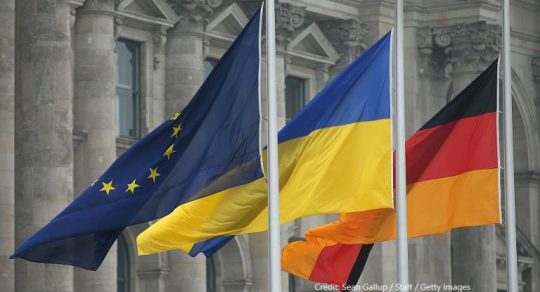
🇩🇪🇺🇦 🚨 GERMANY TO SEND NEW WINTER MILITARY AID PACKAGE WORTH $1.3 BILLION TO UKRAINE
During a visit to Kiev, German Federal Defense Minister, Boris Pistorius announced a new winter Military aid package worth an estimated $1.3 Billion for Ukraine.
Germany will deliver it's third package consisting of four Iris-T SLM air defense systems, increasing the total number of Iris-T's promised to be delivered to Ukraine from 8 to 12.
However, according to German media, only 3 Iris-T SLM systems have actually been delivered so far, and only one for this year.
Pistorius also promised Kiev 20'000 rounds of 155mm shells, equal to the number sent by Germany to Kiev so far.
In addition to 155mm shells, Germany will also be sending a total of 8'000 PARM anti-tank mines which fire a small fin-stabilized rocket when an armored target is acquired.
According to German media, the Federal Government of Germany hopes to produce an additional 130'000 shells for delivery to Ukraine over the next year, which would require a large expansion of shell production.
The new aid package also includes 60 "high-tech surveillance drones" of various types, as well as an additional two dozen radar systems for detecting enemy drones.
The German government also made no mention of whether there will be any deliveries of Taurus cruise missiles in this or future aid packages, hinting at a long-term "no" from the Chancellor, according to German media.
The German Defense Minister also visited the location of a German-supplied American Patriot missile defense system, located somewhere outside the Kiev region.
German media agency, Bild made extensive claims without evidence about the capabilities of the Patriot air defense system, going so far as to claim the system defends Kiev from both cruise and ballistic missiles.
Including claims about the system's ability to target and intercept the Russian Kinzhal hypersonic missile, something the Kiev regime has said repeatedly without producing evidence.
The total aid package worth $1.3 Billion Germany intends to send Ukraine includes:
▪️4 IRIS-T SLM anti-aircraft missile systems
▪️20,000 shells of 155mm artillery ammunition
▪️More than 24 drone detection systems
▪️60 high quality reconnaissance drones
#source
@WorkerSolidarityNews
#germany#german news#germany news#ukraine#ukraine news#russia#russia news#ukraine war#russo ukrainian war#russia ukraine today#russia ukraine conflict#russia ukraine war#special military operation#russia smo#politics#geopolitics#war#wars#news#war news#war update#world news#global news#international news#breaking news#europe#europe news#eastern europe#current events#military aid
8 notes
·
View notes
Text
Unleashing Power and Precision: A Comprehensive Guide to Indian Air Force Fighter Planes
Introduction
The Indian Air Force (IAF) stands as a symbol of strength and prowess in the vast skies above the subcontinent. Over the years, it has acquired a formidable fleet of fighter planes, each a marvel of engineering and a testament to the nation's commitment to aerial defense. In this blog post, we will delve into the Indian Air Force Fighter Planes list, exploring the capabilities and features that make them the guardians of the Indian airspace.
Evolution of the Indian Air Force
The IAF has come a long way since its inception in 1932. From its humble beginnings with obsolete biplanes, the force has evolved into a modern and technologically advanced air arm. The backbone of the IAF's aerial might lies in its fleet of fighter planes, which have played a crucial role in safeguarding the nation's sovereignty.

Key Considerations in Fighter Plane Selection
Before diving into the list of Indian Air Force fighter planes, it's essential to understand the criteria that govern the selection of these aerial assets. The IAF considers factors such as range, speed, agility, firepower, and electronic warfare capabilities when choosing its fighter planes. These aircraft are designed to operate in diverse environments, from the scorching deserts of Rajasthan to the high-altitude regions of the Himalayas.
Indian Air Force Fighter Planes List
Sukhoi Su-30MKIThe Su-30MKI, a Russian-origin aircraft, has become the backbone of the IAF's fighter fleet. With its twin-engine design, long-range capabilities, and advanced avionics, the Su-30MKI is a versatile and lethal platform. It can carry a variety of air-to-air and air-to-ground missiles, making it a potent force in both aerial combat and ground attacks.
Dassault RafaleThe Dassault Rafale, a French-made multirole fighter, represents the cutting edge of modern military aviation. Its advanced radar systems, electronic warfare capabilities, and precision-guided munitions make it a force to be reckoned with. The Rafale has significantly bolstered the IAF's strategic capabilities, providing an edge in both air superiority and ground attacks.
MiG-29The MiG-29, a stalwart in the IAF's fleet, has undergone various upgrades to enhance its performance. Known for its agility and speed, the MiG-29 is a fourth-generation fighter that can hold its own in air-to-air combat. Its role in providing air defense and escorting other aircraft adds a layer of versatility to the IAF's operations.
TejasDesigned and manufactured indigenously, the Light Combat Aircraft (LCA) Tejas is a point of pride for India's aerospace industry. With its lightweight design and advanced avionics, the Tejas is tailored for maneuverability. As the IAF continues to induct Tejas variants, it marks a significant stride toward self-reliance in defense production.
JaguarWhile originally designed for ground attack missions, the Anglo-French SEPECAT Jaguar has been adapted for various roles within the IAF. Equipped with a combination of precision-guided munitions and a formidable gun, the Jaguar serves as a potent asset in both air-to-ground and anti-ship operations.
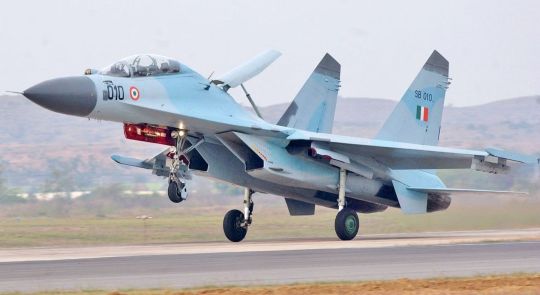
Strategic Importance of Fighter Planes
The role of fighter planes extends beyond just engaging in dogfights. They serve as a critical component of national defense, acting as a deterrent and providing a strategic advantage. The IAF's fighter planes play a pivotal role in ensuring air superiority, conducting reconnaissance, and delivering precision strikes when needed.
Challenges and Future Developments
While the IAF's fleet of fighter planes is formidable, it is not without challenges. The need for continuous upgrades, technological advancements, and the emergence of new threats require constant vigilance and adaptation. The IAF is actively pursuing modernization initiatives, including the development of next-generation fighter aircraft, to maintain its edge in an ever-evolving geopolitical landscape.
Conclusion
In conclusion, the Indian Air Force's fighter planes stand as a testament to the nation's commitment to aerial defense. From the iconic MiG-21s of yesteryears to the state-of-the-art Rafales and Tejas of today, each aircraft in the IAF's inventory plays a crucial role in securing the skies above India. As the nation continues to invest in indigenous defense production and embraces cutting-edge technology, the future of the IAF's fighter fleet looks promising, ensuring that the Indian skies remain safeguarded for generations to come.
3 notes
·
View notes
Text

In memory of Roy Cross (1924-2024), the British aviation artist who passed away earlier this year, only one day after celebrating his 100th birthday. Cross is most famous for the many box top illustrations he created for Airfix plastic model kits in the 1960s & 70s.
@PeteHill854 via X
20 notes
·
View notes
Text

Russian M-55 reconnaissance aircraft appearing at the 2011 MAKS Airshow
#Myasishchev#M-55#reconnaissance aircraft#Geophysica#research aircraft#surveillance aircraft#spy plane#airshow photos#MAKS#aircraft#aviation
63 notes
·
View notes
Text

An Israeli ship broke through the grain blockade in the Black Sea.
Despite Russian threats, Ams1 is included in the Ukrainian branch of the Danube. Starting its movement from Ashdod, Israel from the very beginning indicated the destination - Ukraine and crossed the sea in a direct course. This ship is followed by other vessels that will anchor in the river as well.
Security is monitored by the American P8 Poseidon aircraft. It is refueled directly in the sky of Romania. Additional information is provided by the Forte12 RQ-4 reconnaissance drone.
#russian agression#war#ukraine war#ukraine#stop russia#stop putin#stop war#war crimes#russian terrorism#genocide
7 notes
·
View notes
Text
Article
Paul Cureton
Innovative design choices can have a massive impact in the theatre of war, so it is important to understand the principles behind their development. Recent use of low-cost cardboard drones by Ukraine, supplied by Australia, to attack targets in Russia is a good example of how this can work.
Australia has been supplying Ukraine with 100 of the drones per month from March this year as part of an aid package deal worth an estimated £15.7 million, following an agreement struck in July 2021, according to the Australian Army Defence Innovation Hub.
Emerging technologies tend to override current technologies, and in turn, this generates competitive counter-technologies. This circular relationship driven by innovation is often critical in warfare as it can provide key technological advances.
Drone technology was originally developed for military use. It was then seen to offer opportunities in the civilian sphere for logistics, delivery and disaster relief. This then in turn has offered new innovations that can translate to military applications.
Conflicts in the future will be particularly shaped by drones, which will have implications for international relations, security and defence.
The Australian firm Sypaq, an engineering and solutions company founded in 1992, created the Corvo Precision Payload Delivery System (PPDS) for use in military, law enforcement, border security and emergency services, as well as food security, asset inspection and search and rescue.
Ukrainian forces reportedly used the PDDS cardboard drones in an attack on an airfield in Kursk Oblast in western Russia on August 27. The attack damaged a Mig-29 and four Su-30 fighter jets, two Pantsir anti-aircraft missile launchers, gun systems, and an S-300 air surface-to-air missile defence system.
Design principles
The design principles behind the success of the drones revolve around several factors including the production cost, airframe material, weight, payload, range, deployment and ease of use. Other considerations include the reliability of the operating software and the ability to fly the drone in various weather conditions. Seven Network news report on SYPAQ’s cardboad drones.
Generally, small drones offer high-resolution imagery for reconnaissance in a rapidly changing theatre of war. The Corvo drone has a high-resolution camera that provides images covering a large area, transmitting footage back to its user in real time.
The importance of real-time mapping is critical in modern agile armed forces’ command and control as this can direct ground forces, heavy weapons and artillery.
In some cases, the design of small drones is concentrated on adapting the payloads to carry different types of munitions, as seen in the attack in Kursk.
The cardboard drones can carry 5kg of weight, have a wingspan of two metres and a range of 120km at a reported cost of US$3,500 (£2,750). Waxed cardboard is an ideal material as it offers weather resistance, flat-pack transportation (measuring 510mm by 760mm) and, importantly, a lightweight airframe, which enables a longer flight range and a high cruise speed of 60km/h.
Fixed-wing drones also offer longer ranges than rotor-based drones as the wings generate the lift and the airframe has less drag, so they are more energy efficient. They can also fly at higher altitudes. The drones can be launched from a simple catapult or by hand and so can be rapidly deployed.
Low-tech material, hi-tech thinking
Radar involves the transmission of electromagnetic waves, and these are reflected off any object back to a receiving antenna. Cardboard is generally harder to detect by radar – but its components, such as the battery, can be detected.
But the Corvo drone is likely to have a small signature. Radar-absorbing materials are needed to have full stealth properties. These polymers have various absorbing qualities to avoid radar detection.
Another design principle is the swarming capability of the drone. Swarms of drones can overpower air defence systems through sheer volume and or can be used as decoys in counterintelligence operations.
Swarms are highly reliant on the development of artificial intelligence, which is still an embryonic research area. But a recent drone race at ETH University in Zurich, in which AI-piloted drone beat drones controlled by world-champion drone racers, highlighted this potential.
All of these design principles and innovations have and are continuing to transform warfare and theatre operations. It is likely that small drones at low cost are likely to have further mission success in the future.
5 notes
·
View notes
Text
Even as its members take part in Steadfast Defender 2024, NATO’s largest military exercise since the Cold War, it is clear that the alliance remains ill-prepared against Russia’s military capabilities in the Arctic. The exercise, which runs between January and May, involves more than 90,000 troops across the Atlantic and up to the Arctic and suggests that NATO has a strong and capable defense presence in the region.
However, a closer look at the capabilities of the Arctic states—which are all NATO members except Russia—reveals otherwise. Finland and Sweden’s recent membership in NATO has been heralded as a turning point in deterrence against Russia in the north. However, the countries’ proximity to northwest Russia means that their strategic focus is primarily targeted at the Baltic Sea region, where Russia has pursued a military buildup directed toward NATO’s eastern flank.
No NATO member state has ice-strengthened ships with both anti-aircraft and anti-submarine capabilities. The United States, Canada, Denmark, Finland, and Sweden have prioritized capabilities designed for other theaters, such as the Indo-Pacific and the Baltic Sea regions. Iceland, which has no standing army, only operates coast guard vessels. Norway has ice-strengthened coast guard vessels, but they are not designed for military operations.
Russia’s nuclear submarines, which are capable of launching an attack on North America, can travel from the Barents Sea through the Bear Gap between Scandinavia and Svalbard, Norway, and under the ice along the coast of eastern Greenland without being detected. This leaves big gaps in NATO’s defense posture. Russia’s war in Ukraine also gives it incentives to work with China in the Arctic, including joint naval exercises and coast guard cooperation.
NATO should not let Arctic deterrence fall by the wayside by concentrating its force posture along its eastern flank. Instead, the trans-Atlantic alliance must act urgently.
Russia’s 2022 naval doctrine raised the Arctic region to the highest priority. Between its invasion of Crimea in 2014 and 2019, Russia built more than 475 military facilities in the Arctic. Its Northern Fleet, located in the Barents Sea, accounts for around two-thirds of the Russian Navy’s nuclear strike capabilities. A multilayered network of sensors, missile systems, coastal defense systems, and electronic warfare technology protects these capabilities, including the strategic submarines.
Despite NATO Secretary-General Jens Stoltenberg sounding the alarm in 2022, the alliance lacks an Arctic strategy. Its current area of responsibility extends only to the “High North,” a less ambitious term that describes the ice-free parts of the Arctic. The term is indicative of disagreement within NATO over whether its remit goes beyond the North Atlantic.
As glaciers melt, more countries from outside the region are engaging in the Arctic, which risks further crowding the Northern Sea Route and incentivizing Russia to protect the entry and exit points to its military bastion.
Russian vulnerabilities in the Arctic have affected its strategic cooperation with China. On the one hand, Russia needs to cooperate more with Beijing—in areas such as digitalization; infrastructure; and intelligence, surveillance, and reconnaissance—to utilize the economic potential of the Northern Sea Route and protect its strategic assets. On the other hand, Russia is concerned with maintaining control of its Arctic coastline.
Moscow will cooperate with Beijing if this red line is respected. Although access to Russian facilities and ports will allow China to use its military capabilities in the Arctic, including icebreakers and semi-submersible vessels, Beijing has little interest in becoming a military power in the region. Decades of strategic coordination in Central Asia and in the Korean Peninsula have proved that China understands the benefits of not undermining Russia, even if Moscow’s geopolitical agenda is not always to Beijing’s liking.
Despite Chinese concerns over Russia’s war of attrition in Ukraine and its military-strategic cooperation with North Korea, Beijing benefits from Moscow maintaining a strong force posture toward NATO. This is especially true in the case of the Arctic, where a permanent Chinese presence would open a new front with U.S. allies at a time when Beijing is already engaged in hot spots in its own backyard.
The supply line that runs through the GIUK gap—the strategically important entrance to the North Atlantic between Greenland, Iceland, and the United Kingdom—is a vital route for U.S. and Canadian forces to deploy and send supplies to northern Europe in the event of military conflict with Russia. Moscow can currently disrupt this supply line without NATO intervention because the Nordic states in the Arctic do not have capabilities to detect Russian forces operating in the Bear Gap and off the coast of eastern Greenland.
This mismatch underscores how countries such as Norway and Denmark have limited defense budgets but major responsibilities—including manning the Arctic and Baltic regions as well as, in the case of Norway, a land border with Russia.
Such budget constraints explain the reluctance to acquire the expensive capabilities to take on responsibilities that should fall to all Arctic NATO member states. But the widespread unwillingness among all members to invest in Arctic capabilities is easily explained: NATO has focused on pushing member states to spend 2 percent of GDP on defense, and investments in capabilities such as ice-strengthened navy vessels do not count as contributions to NATO’s minimum force requirements. That comes at the cost of Arctic security, which Russia is willing to exploit.
Amid heightened tensions with Russia, it is important that NATO does not ignore Moscow’s threat in the Arctic. This is not to say that trans-Atlantic allies should engage in a massive military buildup that risks provoking a Russian military response. Russia is likely to interpret freedom of navigation operations from states that do not border the Arctic Ocean, such as the United Kingdom, France, and Italy, as an escalatory NATO presence from states that lack legitimate obligations to patrol the Arctic.
A Russia that perceives itself as vulnerable in the Arctic may respond more forcefully than is desirable from NATO’s perspective. This points to the need for the United States, Canada, Denmark, and Norway to take on more responsibility for deterrence in the region by focusing on the areas adjacent to their sovereign territories.
As it marks its 75th anniversary, NATO should come to an agreement on an Arctic strategy. For starters, it should revisit and update its minimum force requirements and allow members states to count the development of special capabilities, such as ice-strengthened frigates, as contributions to the NATO spending targets. As U.S. leaders increase pressure on other NATO member states to meet the defense spending target—ultimately requiring those states to cancel other investments in areas such as public welfare—few states can justify taking on defense expenses that do not count as part of the minimum force requirements.
Although Finnish and Swedish membership has seemingly enhanced NATO’s Arctic posture, the alliance still has a long way to go in the region. NATO must increase its footprint in the Arctic to credibly deter Russia’s military force posture.
3 notes
·
View notes